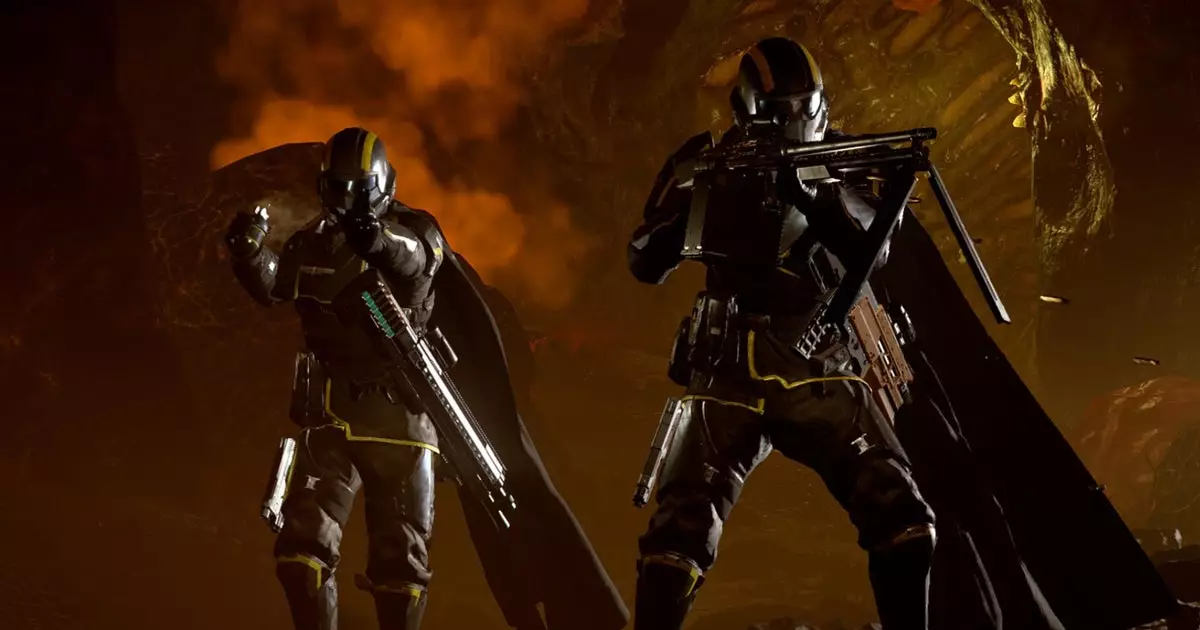In the fast-paced world of game development, adaptive responses to unforeseen issues are not just admirable—they are essential. Arrowhead Studios exemplifies this principle with their recent strategic decision to temporarily disable the Rupture Strain, one of Helldivers 2’s most formidable enemies, to address unintended gameplay consequences. Such actions reveal an important truth: maintaining game balance is an ongoing, dynamic process that often requires difficult choices, including the removal or reworking of content until a sustainable solution is found. It underscores the reality that even the most meticulously developed games are susceptible to balance issues that can threaten player enjoyment and fairness.
This decision to pull the Rupture Strain offline for five weeks underscores the studio’s commitment to ensuring the long-term health of the game. Rather than stubbornly pushing an overpowered enemy onto players and risking widespread frustration, Arrowhead has prioritized player experience over immediate content activation. This choice reflects a mature understanding of game design: that sometimes, removing a problematic element temporarily is better than risking player dissatisfaction and damage to the game’s reputation. For fans and critics alike, this proactive approach signals a willingness to listen, adapt, and refine in response to real-world gameplay data, rather than blindly sticking to initial designs.
The Complexity of Balancing High-Stakes Encounters
The core issue that prompted the Rupture Strain’s removal centers on its overpowered and unpredictable behavior, particularly its ability to emerge suddenly and annihilate unprepared players. Initially, this enemy’s threat was limited mostly to session hosts—those who create multiplayer events—making for an uneven challenge. However, subsequent patches aimed at addressing these issues inadvertently created broader problems, affecting all players indiscriminately. This highlights how intricate and fragile game mechanics can be, where a fix intended to calibrate difficulty can inadvertently introduce new layers of imbalance or unfairness.
Developers often walk a tightrope between challenge and frustration. In Helldivers 2’s case, the introduced fix aiming to stabilize the enemy’s behavior failed to respect the original balance, tipping the scales toward frustration rather than accomplishment. The studio’s transparency about these flaws—admitting that the enemy’s current form “functioned in a way we did not intend”—demonstrates humility and an understanding that live updates will involve missteps. But such acknowledgments also highlight the importance of testing and iterative development, especially for enemy AI that interacts with multiplayer systems over complex networks.
The Role of Community Feedback and Developer Responsiveness
An important aspect of this ongoing balancing act is how developers respond to the community. Arrowhead’s communication via Discord illustrates a commendable level of transparency, providing insight into the technical challenges behind the enemy overreach. The explanation that a “networking issue” caused the Rupture Warriors’ overzealous attacks illuminates how underlying code and multiplayer synchronization can have outsized effects on gameplay. Fixing one aspect can sometimes ripple into unintended consequences, which can only be mitigated through careful re-evaluation and testing.
Further, making the decision to pull the enemies offline temporarily demonstrates respect for the players’ experience. Rather than stubbornly insisting the original design could be fixed on the fly, Arrowhead chose the pragmatic route of removing the problematic enemy component for now. This respects the principle that better gameplay—especially in cooperative multiplayer—is rooted in fairness and accessibility, which can sometimes mean sidelining ambitious but problematic content until it can be refined.
What Next for Helldivers 2?
Looking ahead, the hope is that these interim adjustments will pave the way for a more balanced and enjoyable experience once the Rupture Strain is reinstated. By taking this enemy offline, the studio buys crucial development and testing time to refine behaviors, attacks, and network interactions. The five-week window provides a valuable opportunity to understand better how these enemies behave across different scenarios and ensure that their return is met with fewer complaints and more excitement.
Ultimately, Arrowhead’s decisive actions reflect a broader lesson about the importance of humility and flexibility in game development. No matter how meticulously a game is crafted pre-launch, live updates are often necessary to maintain a healthy, balanced ecosystem—especially in multiplayer shooters where chaos and unpredictability are part of the appeal. It’s an acknowledgment that sometimes, the best way to move forward is to temporarily step back, re-evaluate, and reconfigure—an approach that elevates both the game’s integrity and its long-term success.

